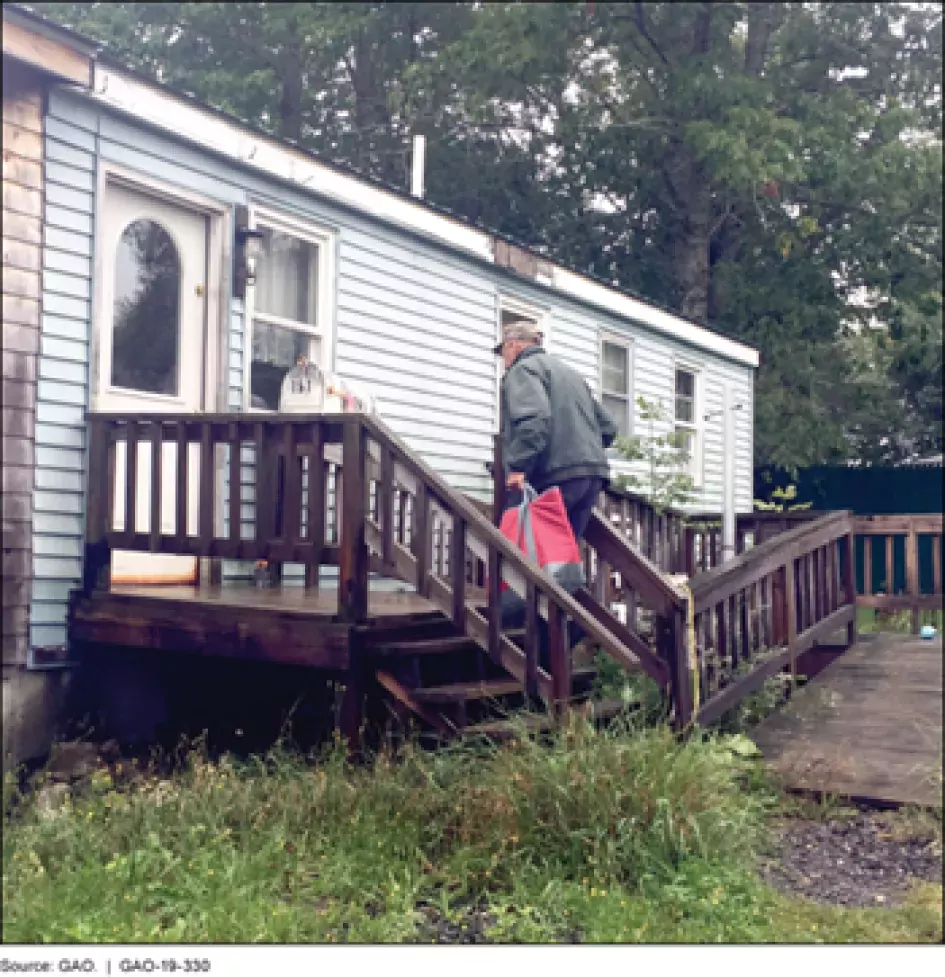Providing Services to Older Adults Isolated Due to COVID-19
Adults over the age of 60 may be more at risk of serious health issues as a result of the spread of COVID-19 (coronavirus). These adults may isolate themselves in their homes for increased safety, and may face challenges accessing needed services.
In today’s WatchBlog, we look at some of the recent federal efforts aimed at helping older adults, who are stuck at home due to the pandemic, obtain needed meals and other services. We also look at our work on the strategies developed by rural communities for delivering these services to isolated older adults—strategies that may be helpful in all areas during the pandemic.
Older Americans Act programs and the COVID-19 response
To stay in their homes as they age, older adults often need services such as in-home care, meal delivery, and transportation to medical appointments. Under the Older Americans Act of 1965, the Department of Health and Human Services (HHS) funds grants to help state and local agencies provide these services.
On March 13, 2020, the President declared a state of emergency for the COVID-19 pandemic. In doing so, he enabled states’ governors to request declaration of a major disaster, which would then give states additional flexibility to use their existing funding under the Older Americans Act for disaster relief. HHS states that disaster relief activities for older individuals may include, but are not limited to:
- providing drive through, take out, or home-delivered meals,
- providing well-being checks via phone, in-person, or virtual means, and
- providing homemaker, chore, grocery/pharmacy/supply delivery, or other services.
On March 18, 2020, the President signed the Families First Coronavirus Response Act, which, among other things, provides additional funding for nutrition services programs under the Older Americans Act. Specifically, it provides $250 million in supplemental funding for fiscal year 2020 for expanded food assistance for older adults, including for home-delivered meals, congregate meals, and meals for Native Americans.
On March 27, 2020, the President signed the Coronavirus Aid, Relief, and Economic Security (CARES) Act, which provides an additional $500 million in supplemental funding for these programs.
Rural strategies for delivering services to isolated older adults might help other older adults
In our report on services for rural older adults, we found that rural aging agencies and service providers had developed a number of ways to deliver meals and other services to isolated older adults. These strategies could offer some helpful tips for meeting the needs of older adults everywhere during the COVID-19 pandemic. Strategies include, for example:
- delivering frozen or shelf-stable meals to older adults, once every 1-2 weeks;
- identifying neighbors to help pick up and drop off frozen meals or using a service that ships refrigerated meals via FedEx, when delivery is not an option;
- providing older adults with extra frozen or shelf-stable meals or packages of non-perishable food in the event of emergency situations;
- transferring funds designated for congregate meals (those served in a group setting) to provide home-delivered meals; and
- serving people virtually by streaming wellness classes or providing online training for caregivers.
Volunteer Delivering a Week’s Worth of Meals in Rural Maine
Also, we found that rural localities tried to mitigate social isolation among older adults through the use of volunteers. In Maine, volunteers through the Retired and Senior Volunteer Program visited older adults who did not have nearby family or friends; other volunteers in the state conducted check-ins with homebound older adults who received infrequent meal deliveries.
In the wake of the coronavirus, such check-ins could be done by phone or in other ways as appropriate, based on guidelines from the CDC and state and local government agencies.COVID-19 information is also being provided by HHS’s Administration for Community Living.
To learn more about the strategies rule communities use, which could be used by all communities to help older adults, who are sheltering in place as a result of the coronavirus, read our report.
Comments on GAO’s WatchBlog? Contact blog@gao.gov.
GAO Contacts
Related Products

GAO's mission is to provide Congress with fact-based, nonpartisan information that can help improve federal government performance and ensure accountability for the benefit of the American people. GAO launched its WatchBlog in January, 2014, as part of its continuing effort to reach its audiences—Congress and the American people—where they are currently looking for information.
The blog format allows GAO to provide a little more context about its work than it can offer on its other social media platforms. Posts will tie GAO work to current events and the news; show how GAO’s work is affecting agencies or legislation; highlight reports, testimonies, and issue areas where GAO does work; and provide information about GAO itself, among other things.
Please send any feedback on GAO's WatchBlog to blog@gao.gov.





